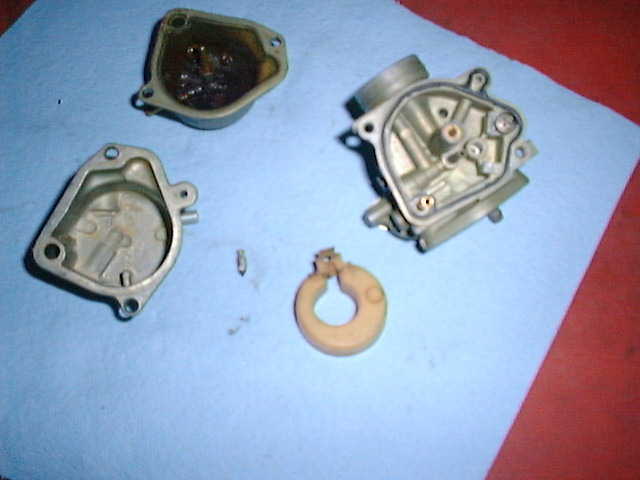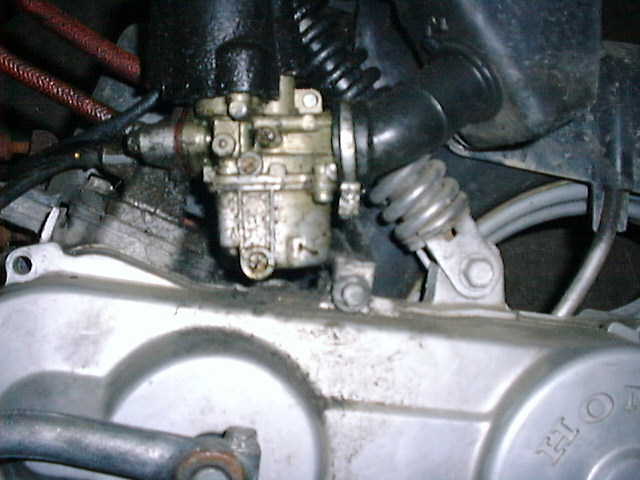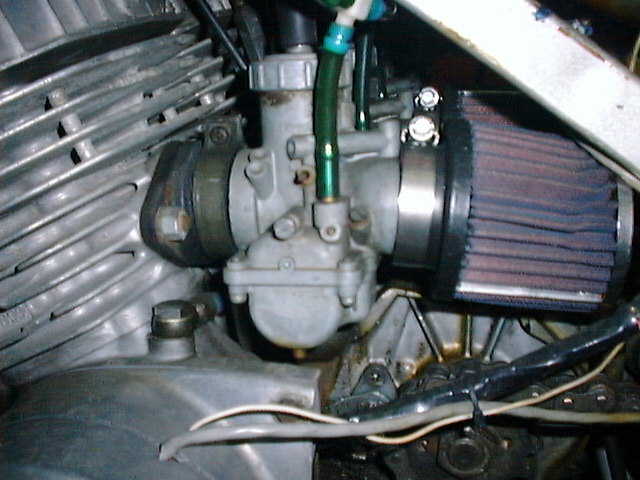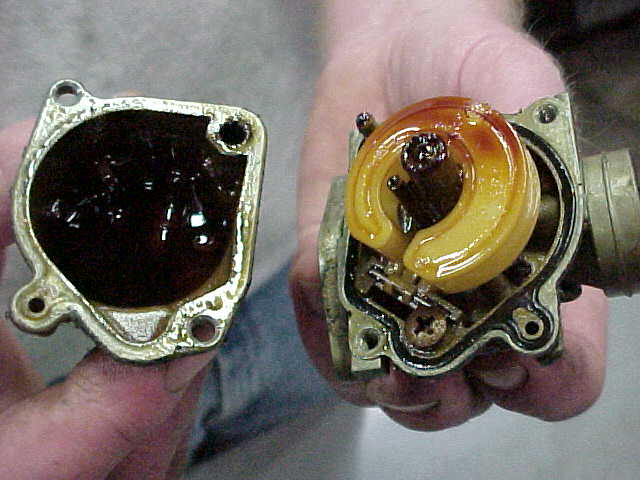|
Repairing Moped Carburetors
|
|
A
carburetor is a tube that air is sucked through into the engine. The
speed
of the engine is controlled by how much air the carburetor allows
through
it. As the air passes through the carburetor, it goes through a venturi
section that has a straw sticking up into the air stream. Fuel is
sucked
up the straw ( called an emulsion tube) and mixed with the air going
into
the engine.
If your engine is running badly, many times it is caused by a piece of
sediment getting into the tiny holes that the fuel must pass through
and
plugging them, or old fuel will dry out and turn into a "tar like" goo
that
plugs the holes. Chemical cleaners do not work well with either
sediment
or Goo, it is not the same type of dirt found in auto carburetors. The
only way to really clean them correctly, since the holes are so small,
is manually with a guitar string or piano wire. The metering
orifice
(jets) in a carburetor are normally small screws with very precisely
drilled
holes in them to meter the fuel. The jets are numbered according to
size,
larger numbers meaning more fuel. |
 |
This is a image of a Spree carb, many are similar.
|
Notice the heavy dark deposits in
the
bowl on the top. That is caused by fuel drying out in the bowl, leaving
the tar goo. This must all be removed when cleaning, or it will come
loose
later and replug the jets.
Most
carbs have a pilot jet and idle air screw for idle to 1/4
throttle
and base idle, slide needle adjustment (E clip) for 1/4 to 3/4
throttle,
and a main jet for 3/4 to full throttle. The pilot and main
jets
must be cleaned carefully to be sure no reside is left on the inside
diameter
of the hole. Best way is to floss them out with a small wire, like a
very
small guitar string. When done you must be able to see light through
the
jet.
The fuel in
the bowl is controlled by the float and float needle, which works the
same
as a toilet flush mechanism. The fuel fills the float bowl until
the float rises up enough to force the float needle into its seat,
shutting
off the fuel flow. as the engine draws the air/fuel mix into itself,
and
the bowl empties, the float drops allowing the needle to open the way
for
more fuel to flow in from the gas tank. If the float
needle sticks or is dirty, the fuel bowl will overflow.
When you are running you
engine,
if it feels like it is running out of fuel, or is wheezing and weak, it
may be running to lean (not enough fuel.)
If it stutters, and
does not want to rev up all the way, it may be getting to much
fuel
(rich) When a two cycle engine is
started
cold, it will stutter a bit while warming up, then rev out to full
speed.
If the carb is set a bit too rich, you may get a long warmup
period.
If your engine peaks out and runs up to speed right off the start, and
then gets hot and slows a bit, it may be too lean.
The
air cleaner assembly is critical
for proper running. Remove the air box, or part of it, and the
engine
may get so much air flow that it will just die out at after 1/2
throttle.
If you put oil on a foam element, it may reduce speed by running to
rich,
not allowing air to get through.
|
 |
Typical
Honda carburetor has three screws
|
Bottom screw is
the drain, very nice for
getting out old fuel from storage, and
water. Screw that lines up with the carb slide is the idle
adjustment. That
should
be set wherever it idles right. The Other screw that has a spring to
hold
it in plsc is the idle air screw. That is bottomed out, and backed out
1 and 1/2 turns in most cases.
How
does that plastic choke thing work?
On
most carburetors, the pilot jet and main jet are separate and removed
by
unscrewing with a small flat screwdriver. Be carefull that the tip on
your
screwdriver is in very good condition, sharp and flat. Pilots jets that
are recessed into the carb body are difficult to remove and tight, if
your
screwdriver rounds out the slot in the jet you will buy a new
carburetor.
The pilot
jet on many Honda models is a brass tube pressed into the carb body and
must be removed by carefully twisting and pulling with a pliers. It is
common to crush the tube slightly on removal. The hole in the pilot jet
is very small and a small stiff wire is required for
cleaning.
Tap the tube back in place when done.
|

carb
|
 |
Scooter Therapy Inc
12 North Few
Street | Madison,
WI
53703
toll
free
1-800-411-1543
| local
1-608-255-1520
fax
1-608-255-1587 | E-mail
|
Scooter Therapy
Inc
12 N. Few
St
Madison, WI
53703
toll
free 1-800-411-1543
local
1-608-255-1520
fax
1-608-255-1587
E-mail
Hours: M-F,
9-6 Saturday, 10-3 CST
copyright
(c)
2000
Scooter Therapy
inc.
|

